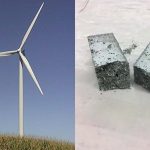Development of Surface-Mounted Smart Piezoelectric Modules for Bridge Damage Identification and Safety Monitoring
|
The goal of this study was to develop viable tools that utilize ultrasonic smart piezoelectric material (lead zirconate titanate, PZT) to assess the condition of concrete bridges. Existing non-destructive testing methods for inspecting concrete structures all suffer from limitations in accuracy, cost, maneuverability, in situ capability, and implementation. The researchers determined that the surface-mounted PZT system tested was effective in determining the wave modulus of elasticity of concrete structures and is a promising alternative nondestructive technique for assessing concrete properties. ... Read More about Development of Surface-Mounted Smart Piezoelectric Modules for Bridge Damage Identification and Safety Monitoring | |







